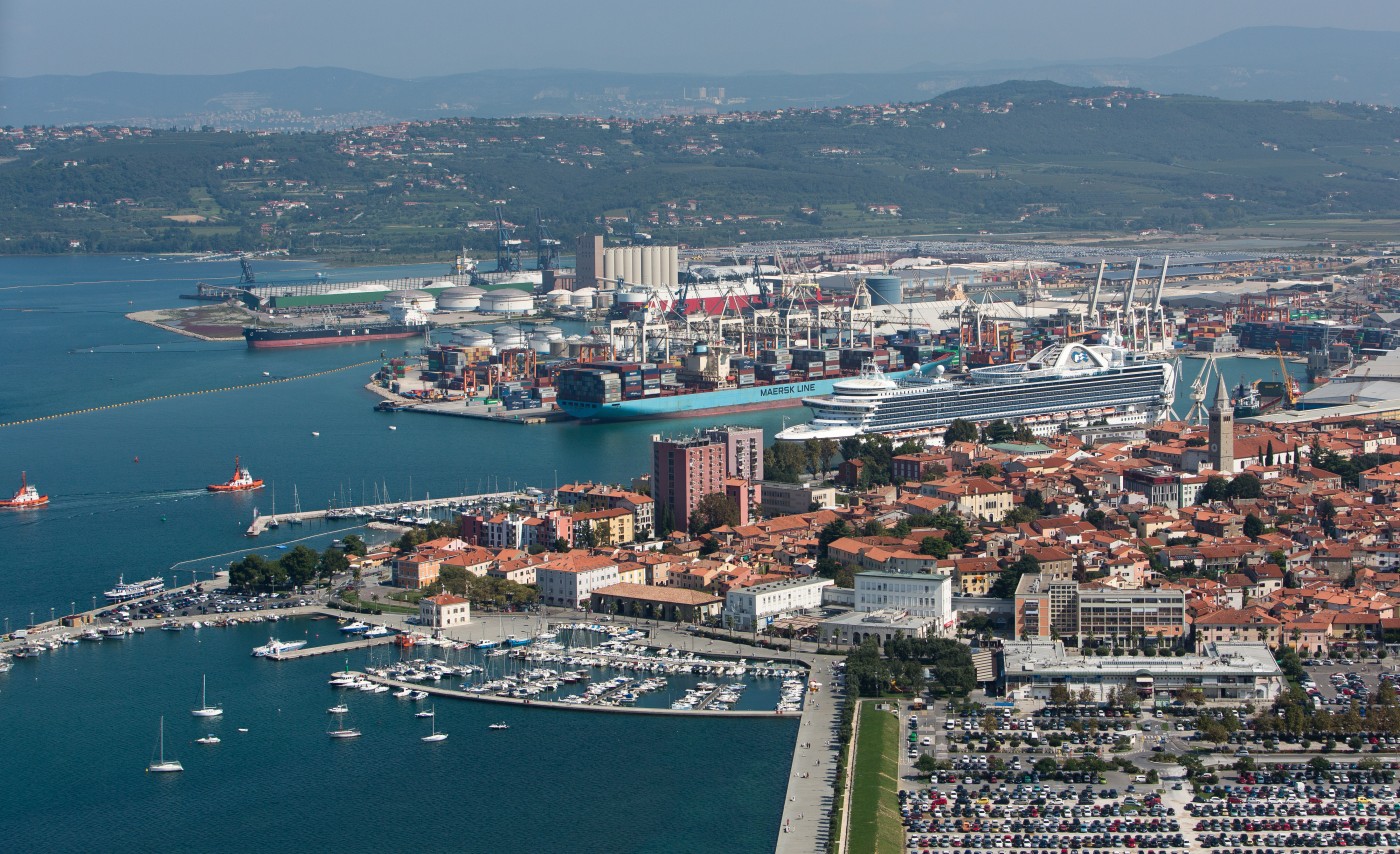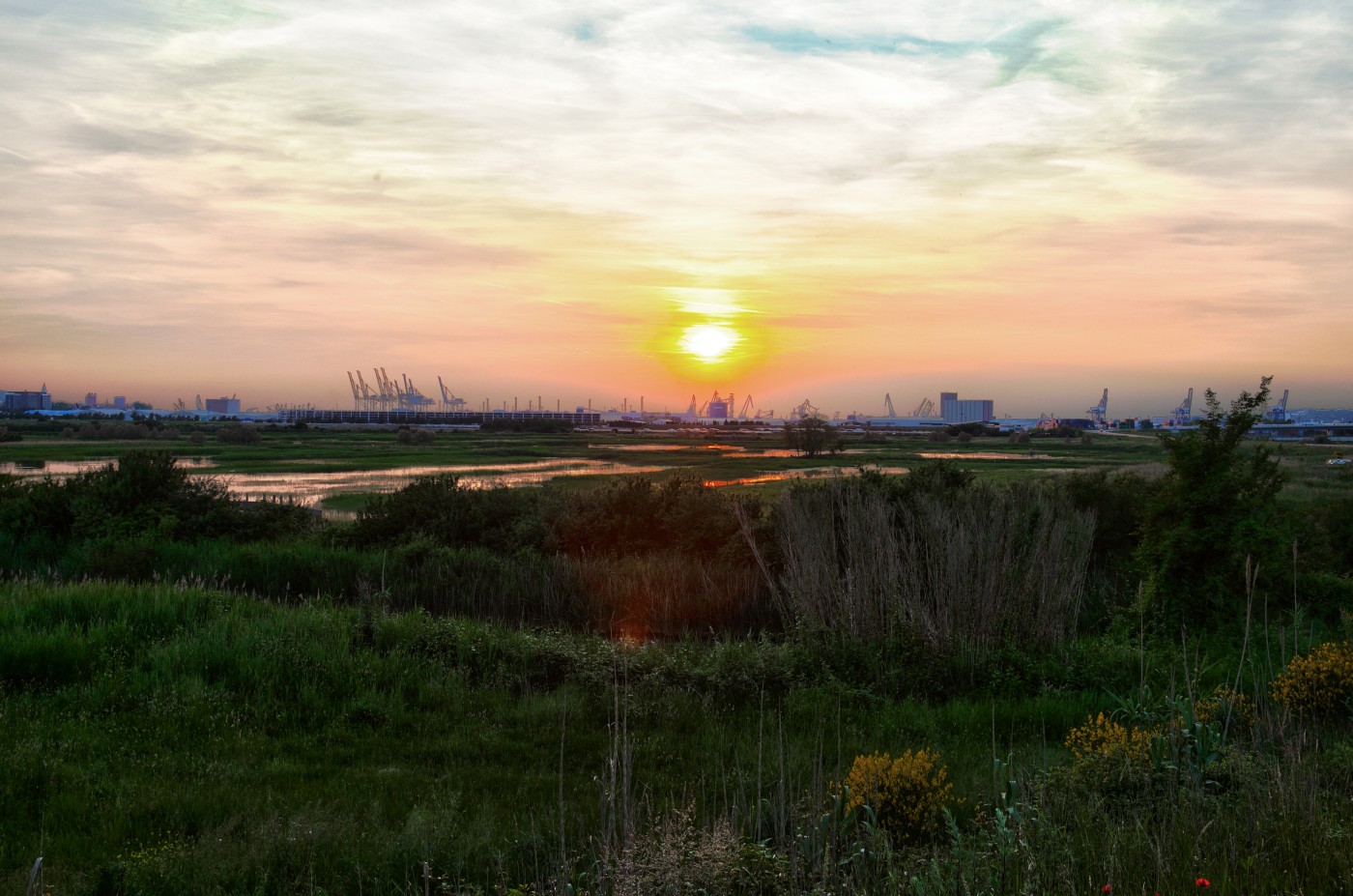30 September 2016
This month, the Port of Koper is ESPO’s port of the month. Situated along the coasts of the Adriatic Sea, the Port of Koper is the only port in Slovenia and it can be considered as a multipurpose port. Let’s have a closer look at this port!
ESPO: Can you briefly tell us about the Port of Koper? What are its main characteristics and challenges?
Port of Koper: The Port of Koper is the only port in Slovenia. Next year, the port will celebrate its 60th anniversary. The port is a multipurpose one and its traffics are growing fast, overpassing the total of 20 million tonnes in 2015 and with a main focus on containers (almost 800 000 in 2015) and new vehicles (more than 600 000 in 2015), making the Port of Koper the biggest container terminal in the Adriatic and one of the biggest car terminals in the Mediterranean. Since the existing port capacities are very well utilised, there are ambitious ongoing investment plans estimated at an amount up to 300 million EUR. The port is also a transit port, serving more than 70% to non-domestic hinterland markets and less than 30% to the Slovenian market. The port therefore really has a wider European role and value.
ESPO: The Port of Koper is the only port in Slovenia, offering cargo handling and warehousing services for all types of goods. To get the goods to the desired destinations, a good connection with the hinterland is indispensable. Could you briefly tell us how the port is connected to the hinterland?
Port of Koper: One of the port’s main advantages is a good railway network and regular train connections. All of the port’s terminals are connected with rails, about 60% of all port’s traffics are served by railway services with an average of 62 cargo trains per day. The trains are connecting the port in maximum 2 days with all main hinterland markets: Austria, Hungary, Slovakia, Germany, the Czech Republic, Italy, Croatia, Poland, etc. The rest of the traffics are supported by flexible road delivery, making it possible to reach the key hinterland destinations within 24 hours. Due to the expected growth of cargo volumes, railway and road accesses to the port are planned to be enlarged and upgraded.
ESPO: Differently from other European ports, the activities of the Port of Koper comprise the management of the free zone area, the management of the port area and the role of terminal operator. How has being engaged in so much activities been of benefit to the port and which are the challenges?
Port of Koper: In fact, the Port of Koper, with the status of free zone type A, has a very specific port governance model. The port functions without a classic port authority since the company Luka Koper d. d. (which is a public limited company, with the State of Slovenia holding the majority of the shares) performs the port development, and the commercial and operator role. Luka Koper d. d. also finances all the investments in port capacities - infrastructure and equipment. The reason for such a governance model is historical, since the company Luka Koper constructed and performed all port operations from the very beginning. Due to the fact that the port area is limited, significant positive effects were recognised by such port management, such as: flexibility, market orientation, self-financing of all the port’s activities, synergies between terminals and optimal resource planning, environmental and social responsibility, etc.
ESPO: By creating NAPA (North Adriatic Ports Association), the Port of Koper and the ports of Venice, Trieste and Rijeka bundled forces in order to cooperate and achieve a number of common goals. Could you briefly tell us more about NAPA? Has this cooperation already paid off in terms of the goals for which it was created?
Port of Koper: Yes, we are satisfied with the cooperation, which started in 2010. All the North Adriatic ports have identified potentials for growth and several common issues to be highlighted and approached together in order to gain positive effects in ports’ performances. We focused our cooperation in these first years mostly on: 1) promotional activities on overseas markets, presenting our ports on the key exhibitions and conferences, and 2) concrete institutional initiatives as well as projects on different EU programmes (related to ICT, environment, alternative fuels, security, corridors policy, port infrastructure, etc.). Based on NAPA experience, we also established very regular communication and an important network between our ports, which allow us to exchange different kinds of information.

ESPO: The Port of Koper is a core port of the TEN-T European transport network, lying at the intersection of two important corridors: the Baltic-Adriatic corridor (BAC) and the Mediterranean corridor. How has being a core port been of benefit to your port?
Port of Koper: According to our opinion, based on the transparency of the core network and the TEN-T corridors as well, the Port of Koper gained visibility since it was properly included in the BAC and MED corridor. With this status, the port has a more reliable development scenario for the customers, due to the fact that till 2030 relevant capacities in the port and on its connection will be completed – according to the concrete commitments of Member states. Therefore, the first investments have already started and EU co-financing (CEF, cohesion) has been received, as well as the agreements about EIB loans. Having a clear picture about market needs, a concrete and coherent time frame, and a financial scheme for the required investments along the complete corridor (including the port) brings significant stability and credibility to the transport route.
ESPO: During the last CEF (Connecting Europe Facility) open call for proposals, the Port of Koper managed to achieve two project applications: CarEsmatic and Elemed. Could you briefly present those two projects and explain their added value to the port?
Port of Koper: The project CarEsmatic, coordinated by the Port of Koper, is targeting the MoS priority for finished vehicles on the route Koper – Barcelona. The project includes a partnership between our car terminal in Koper, Autoterminal, and the Port Authority in Barcelona and the shipowner Neptune Lines from Piraeus. The project activities are mostly focused on infrastructure investments in the 2 ports: a new berthing facility in Koper and railway upgrades in Koper and Barcelona. Additionally, there is a specific pilot study dedicated to the solution for electric cars for the shipping line and the port.
The project Elemed is studying the possibility towards the East Med sea corridor electrification involving ports from Cyprus, Greece and Slovenia. The project is looking for solutions regarding cold ironing and electric bunkering, targeting zero emissions in the ports and shipping. The Port of Koper will contribute to the project’s outcomes by looking for a concrete sustainable solution for the onshore electricity and possibilities to adapt its port infrastructure to an environmentally cleaner and friendlier energy supply.
ESPO: On 9 November 2016, ESPO will hand out the ESPO Award on Societal Integration for the 8th time. In 2014, the Port of Koper won the ESPO Award on Innovative Environmental Projects, with a project called ‘No Waste, Just Resources!’. Could you briefly tell us how this project developed ever since?
Port of Koper: We were honoured for having received the ESPO Award in 2014. In fact, the Port of Koper is very focused on the green logistics and long-term sustainable environmental solutions. We are perfectly aware about our impact on the local (natural and social) environment and, considering our future investment plans parallel to a further growth of traffics, we must act with full responsibility also in the future. Since we are centrally managing the whole port area, we have the duty to look for innovative and advanced environmental solutions.
ESPO: Could you briefly tell us about the Port of Koper’s environmental policies?
Port of Koper: The company's business policy pursues prudent management of the environment to preserve it for the generations to come. Monitoring and managing environmental impact has thus become part of the regular activities of the company.
In 2000, Luka Koper was one of the first European and the only Mediterranean port to establish an environment management system according to the ISO 14001 standard applying to all port activities, and we are constantly building upon it. In May 2006, the standard was upgraded to ISO 14001:2004. In 2010, Luka Koper obtained the EMAS certificate and became compliant with the highest environmental protection criteria. The company regularly monitors and supervises the environmental impacts of port activities in co-operation with the presiding expert institutions.
ESPO: ESPO is a partner of PORTOPIA, an FP7 project that aims to measure port performance. What is the Port of Koper’s approach for measuring the port’s performance?
Port of Koper: The Port of Koper measures the port’s performance through several perspectives in terms of regular quantitative data on cargo volumes as well as operations efficiency, financial indicators, environmental effects, etc. Having a modern controlling and also BI system is also in line with our recognised quality standards, supporting the efficiency of our company’s processes. However, it shall also be highlighted that due to the fact that the Port of Koper is managed by the company Luka Koper d. d., which is a public limited company listed on Ljubljana Stock exchange, we have to strictly follow confidentiality rules and we are not allowed to disclose certain data.

Related documents
No attachments.
